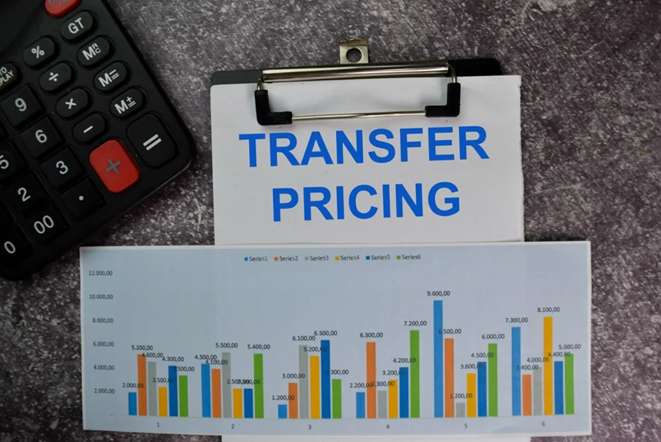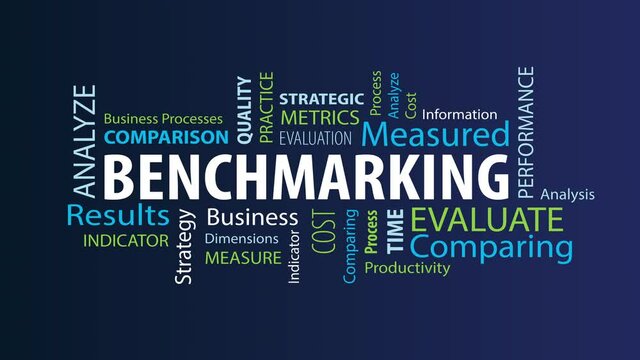- Zabeel Street, AL Karama, Dubai, United Arab Emirates
- +971 4 27164 24
Are you ready to experience the difference that Alpha Equity MC can make for your business? Contact us today to learn more .
A transfer pricing study is a comprehensive analysis conducted by companies to ensure that their intercompany transactions are priced at arm’s length, meaning they are consistent with what unrelated parties agree to under similar circumstances. This analysis is crucial for multinational corporations to comply with tax regulations and mitigate risks associated with transfer pricing.
Transfer pricing is primarily a management reporting concept for divisional or subsidiary efficiency, and later, it becomes crucial for tax concepts. Still, it also has essential accounting and risk-related implications. It refers to the pricing of transactions or arrangements between Related Parties or Connected Persons influenced by the relationship between the transacting parties. Transactions that occur between Related Parties or Connected Persons may include but are not limited to the trade of services, tangible goods, intangibles, financial transactions, as well as certain transactions involving a Permanent Establishment (PE)
A transfer pricing study begins by thoroughly examining each entity's functions performed, risks assumed, and assets employed in intercompany transactions. This analysis helps determine the appropriate transfer pricing method and allocation of profits based on each entity's contributions.
Entity characterisation is a crucial concept in transfer pricing (TP) that summarises the functional analysis of a company and helps determine how its profits should be calculated for TP purposes. It involves assigning a high-level "tag" or functional profile to an entity based on its economically significant functions, assets, and risks (FAR)
Key Aspects of Entity Characterisation
Purpose and Importance
Entity characterisation serves several vital purposes in transfer pricing:
Determination Process
To characterise an entity for TP purposes:
Entities are often characterised based on their business activities. Some typical characterisations include:
Manufacturing
Distribution
Services
Research and Development
The entity characterisation significantly influences various aspects of transfer pricing analysis:
1. Selection of the most appropriate TP method.
2. Identification of comparable companies.
3. Determination of the tested party.
4. Choice of profit level indicators.
5. Interpretation of benchmarking results.
Incorrect entity characterisation can increase scrutiny during TP audits and potential disputes with tax authorities. It's crucial to:
1. Ensure accurate characterisation based on a comprehensive FAR analysis
2. Maintain consistency between the characterisation and the actual conduct of the business
3. Be prepared to justify the chosen characterisation with supporting documentation
Changes in entity characterisation may be viewed as business restructuring, which can trigger additional TP issues, especially if they impact profit potential without corresponding changes in FAR.
In conclusion, entity characterisation is a fundamental aspect of transfer pricing that requires careful analysis and consideration. It forms the foundation for determining arm's length prices and ensures compliance with TP regulations.
The study evaluates and selects the most appropriate method for determining arm's length prices. The OECD guidelines outline five primary methods
1 . Comparable Uncontrolled Price (CUP) method
2. Resale Price Method (RPM)
3 . Cost Plus Method (CPM)
4 . Transactional Net Margin Method (TNMM)
5 . Profit Split Method (PSM)
The choice of method depends on the nature of the transaction, the availability of comparable data, and the functional analysis results.
The study evaluates and selects the most appropriate method for determining arm's length prices. The OECD guidelines outline five primary methods
1 . Comparable Uncontrolled Price (CUP) method
2. Resale Price Method (RPM)
3 . Cost Plus Method (CPM)
4 . Transactional Net Margin Method (TNMM)
5 . Profit Split Method (PSM)
The choice of method depends on the nature of the transaction, the availability of comparable data, and the functional analysis results.
This involves identifying comparable transactions or companies and analysing financial data to establish an arm's length range for the controlled transactions. The economic analysis may include benchmarking studies and statistical analyses to support the chosen transfer pricing method.
A well-documented transfer pricing study serves as a company's first line of defence in case of a tax audit. It demonstrates to tax authorities that the company has reasonably complied with transfer pricing regulations, potentially reducing the risk of adjustments and penalties.
Transfer pricing studies can provide valuable insights into a company's global operations and profitability. This information can be used to optimise the company's transfer pricing policies and overall tax strategy.
The study provides comprehensive documentation that can be presented to tax authorities upon request. In many jurisdictions, including the United States, companies must have contemporaneous documentation ready within 30 days of a request.
At Alpha Equity MC, we offer a wide range of accounting and auditing services to meet the diverse needs of businesses operating in Dubai’s dynamic environment:
Determining arm's length prices for intangible assets, such as intellectual property, can be particularly challenging due to their unique nature and difficulty finding comparable transactions.
Multinational companies must navigate varying transfer pricing regulations across different jurisdictions. This may require tailoring the transfer pricing study to meet specific country requirements.
Transfer pricing is not a one-time exercise. Companies must regularly update their studies to reflect changes in their business operations, market conditions, and regulatory environments.
A transfer pricing study is essential for multinational companies to manage their transfer pricing risks and ensure compliance with tax regulations. By systematically analysing intercompany transactions according to OECD TP guidelines and documenting the rationale behind pricing decisions, these studies help companies defend their transfer pricing positions and optimise their global tax strategies. As transfer pricing continues to be a focus area for tax authorities worldwide, the importance of conducting thorough and well-documented transfer pricing studies cannot be overstated.

The OECD Transfer Pricing Guidelines for Multinational Enterprises and Tax Administrations are a cornerstone of international tax policy. They guide the application of the “arm’s length principle” for valuing cross-border transactions between associated enterprises.
The latest version, released on January 20, 2022, incorporates several important updates and revisions
Key Features of the 2022 OECD Transfer Pricing Guidelines
Updated Guidance: The 2022 edition includes revised guidance on:
This fundamental concept remains central to the guidelines, ensuring that transfer prices between related entities reflect prices that would be agreed upon between independent parties
The guidelines advocate for a standardised approach to transfer pricing documentation, consisting of:
1. Master File
2. Local File
3. Country-by-Country Report
Each Ultimate Parent Entity of the MNE Group whose tax residence is located in the State shall notify the Competent Authority that it is the Reporting Entity no later than the last day of the Group’s Reporting Fiscal Year as per Cabinet Resolution No.44 of 2020 Organising Reports Submitted by Multi-national Companies (MNE’s).
The OECD Transfer Pricing Guidelines serve multiple essential purposes:
1. International Consensus: They represent the agreed international standard for transfer pricing among OECD member countries and many non-member states
2.Double Taxation Prevention: By providing a common framework, the guidelines help minimise the risk of economic double taxation for multinational enterprises (MNEs)
3.Tax Base Protection: They assist governments in ensuring that MNEs' taxable profits are not artificially shifted out of their jurisdictions
4.Business Environment: The guidelines contribute to a stable and efficient business environment for MNEs
The 2022 edition consolidates several updates made since the previous 2017 version, including:
These updates reflect the OECD’s ongoing efforts to address emerging international taxation and transfer pricing challenges.
The OECD Transfer Pricing Guidelines continue to evolve, adapting to the changing global economic landscape and addressing new challenges in international taxation. The OECD remain a crucial resource for tax administrations and multinational enterprises in navigating the complex world of transfer pricing.

Transfer price benchmarking is a critical component of transfer pricing strategies for multinational corporations. It involves analysing comparable transactions between unrelated parties to determine an arm’s length price range for related-party transactions
Key Aspects of Transfer Price Benchmarking
Transfer price benchmarking serves several crucial purposes:
Benchmarking is essential for companies to justify their intercompany pricing to tax authorities and avoid potential penalties or audits
The benchmarking process typically involves the following steps:
A thorough functional analysis of the tested party and potential comparables is crucial for ensuring appropriate comparisons.
Different types of benchmarking studies may be conducted depending on the nature of the transaction:
Each type requires specific databases and methodologies to ensure accurate comparisons.
To ensure reliable and defensible benchmarking analyses, companies should follow these best practices:
By implementing these best practices, multinational companies can develop robust transfer pricing benchmarking analyses that withstand scrutiny from tax authorities and support their overall transfer pricing strategy.
In conclusion, the Alpha Equity MC expert team will help and assist in complying with tax procedures as per UAE corporate tax law and its procedures.
Are you ready to experience the difference that Alpha Equity MC can make for your business? Contact us today to learn more .